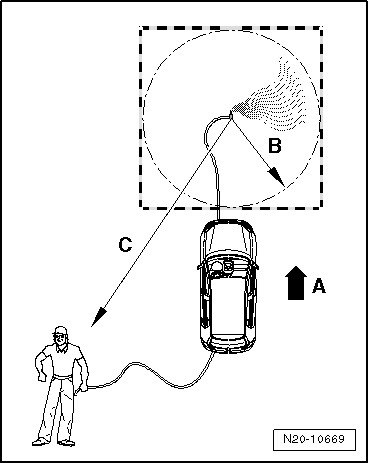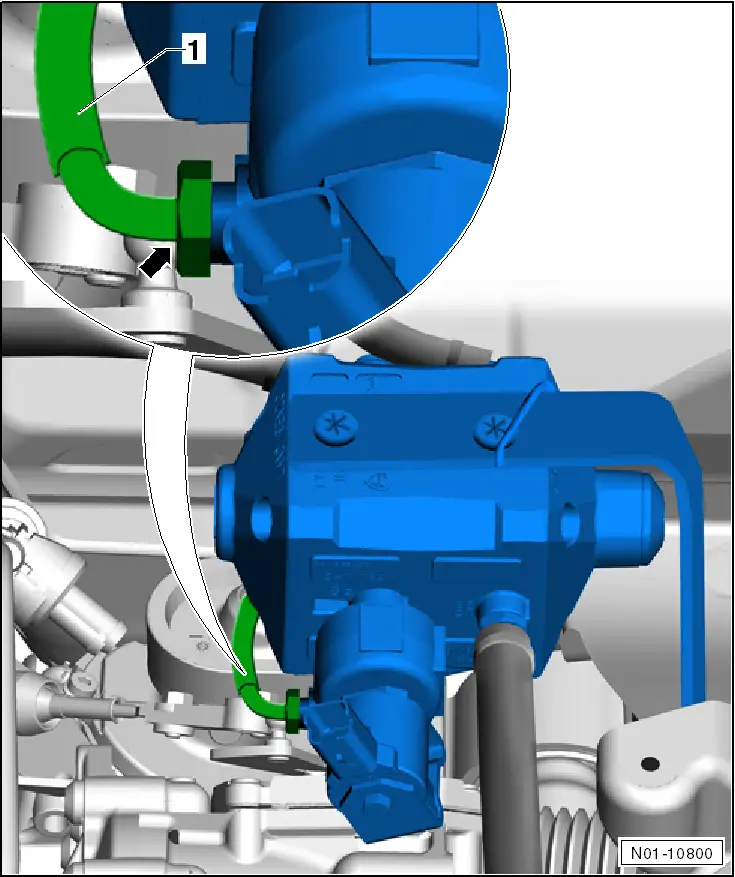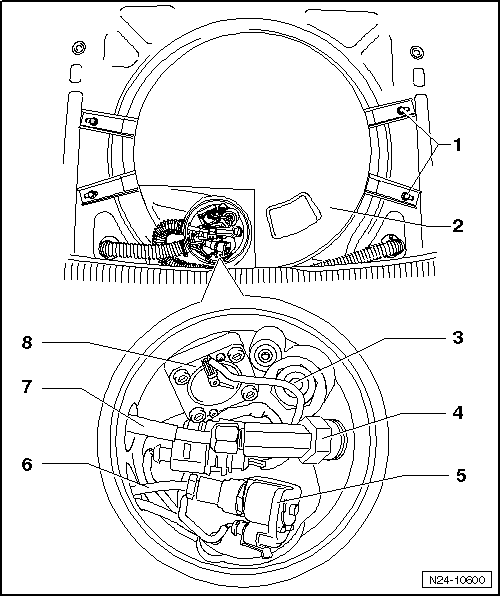| The safety area must be cordoned off using warning bands and the access points must clearly indicate that there is a risk of explosions. |

WARNING | Liquified gas is heavier than air! |
| In the safety are, there should be no recesses, pits, channels, cellars or other rooms that are in lower areas where the gas is able to escape to. |
| There must be no active sources of ignition, such as open fire, electric sparks, electrostatic discharge and hot surfaces that may lead to the ignition of the liquified gas. |
|

Note | t
| Special attention must be paid to prevent gas from entering neighbouring buildings, such as through open doors and windows. The area must be freely accessible and well ventilated (not a backyard). |
| t
| The direction of the wind has to be considered: |
| Version for completely emptying the fuel tank (LPG) |

WARNING | Liquified gas tanks may not be emptied in closed rooms! |
| There is a risk of explosions or poisoning! |
| Fuel tanks must always be drained outside! |
|
| t
| Conventional tank draining systems or liquified gas fackel developed for LPG |
| t
| Venting the ambient air |

WARNING | Liquified gas can cause injuries. |
| The system is pressurised! |
| Meet the required measures: Wear protective gloves and safety goggles. |
| Before opening the system place a cloth around the connection. Then release pressure by carefully loosening the connection. |
|
|
|

|
 Note
Note Note
Note
 Note
Note

 WARNING
WARNING Note
Note